Explore web search results related to this domain.
Creative arts are used in supporting mental health care in a variety of ways. Art therapy uses creative means to treat mental illnesses and improve mental health. It can involve various treatments, such as theater therapy, dance movement psychotherapy, music therapy, poetry, pottery drawing, ...
Creative arts are used in supporting mental health care in a variety of ways. Art therapy uses creative means to treat mental illnesses and improve mental health. It can involve various treatments, such as theater therapy, dance movement psychotherapy, music therapy, poetry, pottery drawing, painting and craft therapy.Art therapy uses integrative techniques to captivate the soul, body and mind in ways that verbal expression alone doesn't appear to (Shukla). Below are a few examples of how creative arts are being tapped to support mental health treatment and recovery.Americans who rate their mental health as very good or excellent tend to engage in creative activities more frequently than those who rate their mental health as fair or poor. Read more. Liu, Q., Wang, F., Tan, L., Liu, L., Cheng, H., & Hu, X. (2023). Comparative efficacy of various art therapies for patients with dementia: A network meta-analysis of randomized controlled trials.“Art-based interventions seemed to be interesting, safe and cost-effective for women”, and “could provide a new avenue for preventing perinatal mental health problems and help to reduce the likelihood of developing a mood disorder and needing pharmacological treatment,” the authors concluded. In addition to targeted art therapy, simply engaging in creative activities can boost your mental health.
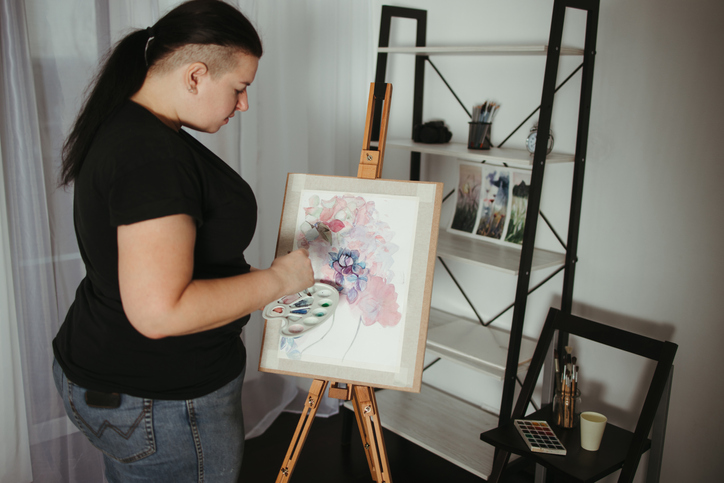
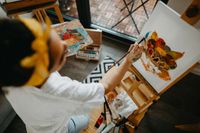
Art therapy is an integrative form ... through creative expression. It is a form of psychotherapy that involves the use of different art forms and mediums to aid in communication and help people to explore their experiences. · Art therapy is used in various settings with individuals, couples, families, and groups to support people of all ages with mental health and ...
Art therapy is an integrative form of therapy that helps individuals heal through creative expression. It is a form of psychotherapy that involves the use of different art forms and mediums to aid in communication and help people to explore their experiences. · Art therapy is used in various settings with individuals, couples, families, and groups to support people of all ages with mental health and physical conditions.Art therapy is a type of psychotherapy that provides a way for people to express emotions and experiences. It offers physical and mental health benefits. Learn how it works and what to expect.Art therapy can help to reduce stress, shame, depression, and anxiety in these cases. Research suggests it can build self-awareness and self-esteem, but more study is needed to fully understand these effects. People living with a cancer diagnosis experience pain, fatigue, nausea, and other physical symptoms as well as mental health challenges like anxiety and depression.Some techniques used in art therapy include but are not limited to: ... A person can engage in creative activities at home.
This article explores how art therapy allows us to explore and resolve inner conflicts through creative expression when traditional verbal methods fall short.
Art therapy is often assumed to be as simple as drawing one’s feelings, but it’s actually a powerful and often misunderstood tool that can help us move toward greater wellness. The quote above by Carl Jung captures the essence of this. This article explores how art therapy allows us to explore and resolve inner conflicts through creative expression when traditional verbal methods fall short. It is a dynamic process of change and growth involving actively making choices that help to create a fulfilling life, integrating healthy habits, and striving for both physical and mental well-being.Everyone has an inherent capacity for creativity, regardless of skill level. In art therapy, there is no “good” or “bad” art. The art therapist inquires with curiosity and asks questions like, “What would you like to share” or “Can you tell me about your image?” The client is encouraged to interpret their art, with meaning evolving over time. Art therapy offers a multifaceted approach to enhancing well-being and self-discovery.If you’re curious about exploring art therapy, consider reaching out to a certified art therapist to discover how this creative approach can support your journey towards greater wellness.Sarah, LCAT (Licensed Creative Art Therapist) and LPC (Licensed Professional Counselor), is Wellness Coordinator, Art Therapist, and Staff Clinician at Anxiety Institute.

In today’s dynamic business ... employee well-being is more important than ever. Incorporating art into the workplace is a strategy gaining traction—not only does it beautify workspaces, but it can also boost employee mental health and creativity....
In today’s dynamic business environment, continuously innovating to enhance workplace culture and support employee well-being is more important than ever. Incorporating art into the workplace is a strategy gaining traction—not only does it beautify workspaces, but it can also boost employee mental health and creativity.Additionally, research indicates that practicing art can help build capacity for managing mental and emotional well-being. These insights underscore the value of integrating art and creativity in fostering a more productive, innovative and engaging work environment.Bringing various art forms into the office can transform mundane areas into daily wellsprings of inspiration. These creative works, from sculptures and paintings to digital art, can boost a space's visual appeal.The link between art and improved mental health is well-documented. Participating in artistic activities can dial down stress, boost emotional well-being and sharpen the mind.
Expressive arts therapy is a multimodal holistic health intervention that mobilizes creative expression in the service of healing both mind and body. It is especially well suited to clients who lack the ability to articulate their inner world with words alone.
Expressive arts therapy is a multimodal holistic health intervention that mobilizes creative expression in the service of healing mind & body.Expressive arts therapy is a multimodal holistic intervention that mobilizes creative expression in the service of healing mind & body.This book begins by describing the philosophical foundations of expressive arts therapies in poiesis (creating by making) as an antidote to mind–body dualism and modern alienation as the root cause of many mental health problems. This book will really appeal to practicing psychotherapists who want to understand how to incorporate expressive arts techniques into their existing approach. Find the book on Amazon. This book is also aimed at practicing therapists and helping professionals with an interest in expressive arts and ecotherapy. This book explains how environmentally aware creative expression can be used to heal the relationship between human beings and nature that can exacerbate and even cause mental health problems from an ecotherapy perspective.This video by Mindful Creative Muse for World Mental Health Day explains the process in more detail. This activity can be conducted with individuals or in a group and was devised by music therapist Paula Higgins.
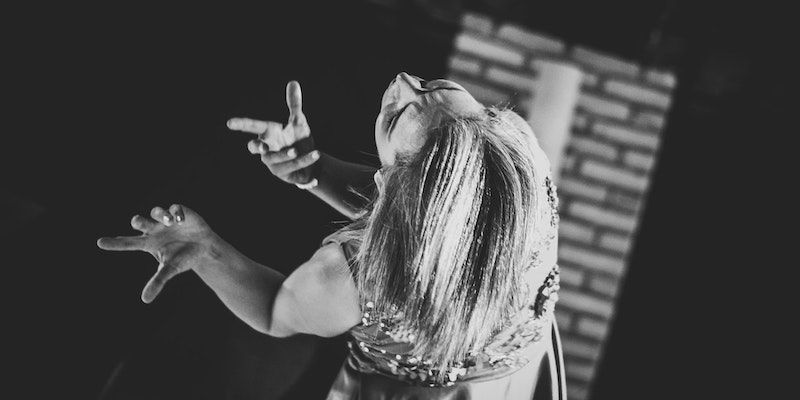
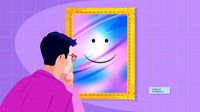
Artificial intelligence is being used to generate paintings, images and even sculptures, with some selling for thousands of dollars. Do we need to reframe our definition of art?
In the drawing room of a stately home in rural Oxfordshire, I watch on as a dungaree-clad artist slowly and deliberately puts pen to paper. Her arm moves across the canvas, the marks gradually coalescing into an abstract portrait of herself. It seems like a moment of creative expression.By design, her very existence brings into question how we define art, and who, or in this case, what, can create it. Will AI algorithms and robots like Ai-Da spell the end of human creativity and artistry, or can they be harnessed to augment our own creative potential?Instead, they can help to kickstart an artistic metamorphosis and move us towards totally different ways of seeing and creating, something Marcus du Sautoy, a mathematician at the University of Oxford and author of The Creativity Code: Art and Innovation in the Age of AI, would contend.There is historical precedence for new technology liberating us from our creative shackles. Take the invention of photography in the 1800s for example. Some artists saw the camera as the antithesis of an artist, and photographs as the mortal enemy of the art establishment.
Many people also find that doing ... their mental health. So finding ways to be creative without using a therapist can be a good way to support your wellbeing too. As with all treatments, different things work for different people at different times. If something hasn't worked for you, it's important not to blame yourself. While some people find arts and creative ...
Many people also find that doing creative activities on their own, or in groups as part of a hobby, helps their mental health. So finding ways to be creative without using a therapist can be a good way to support your wellbeing too. As with all treatments, different things work for different people at different times. If something hasn't worked for you, it's important not to blame yourself. While some people find arts and creative therapies helpful, not everyone does.Find out about the different types of arts and creative therapies and how to access them.Browse our online range including our range of mental health resources, wedding favours, Pause for Mind and greetings cards. ... Explains the different types of arts and creative therapies and how to access them.Our information on getting the most from therapy might help when you're getting started. Or if arts and creative therapies aren't for you, see our pages on seeking help for a mental health problem for other options you could try. < Dialectical behaviour therapy (DBT) Ecotherapy >
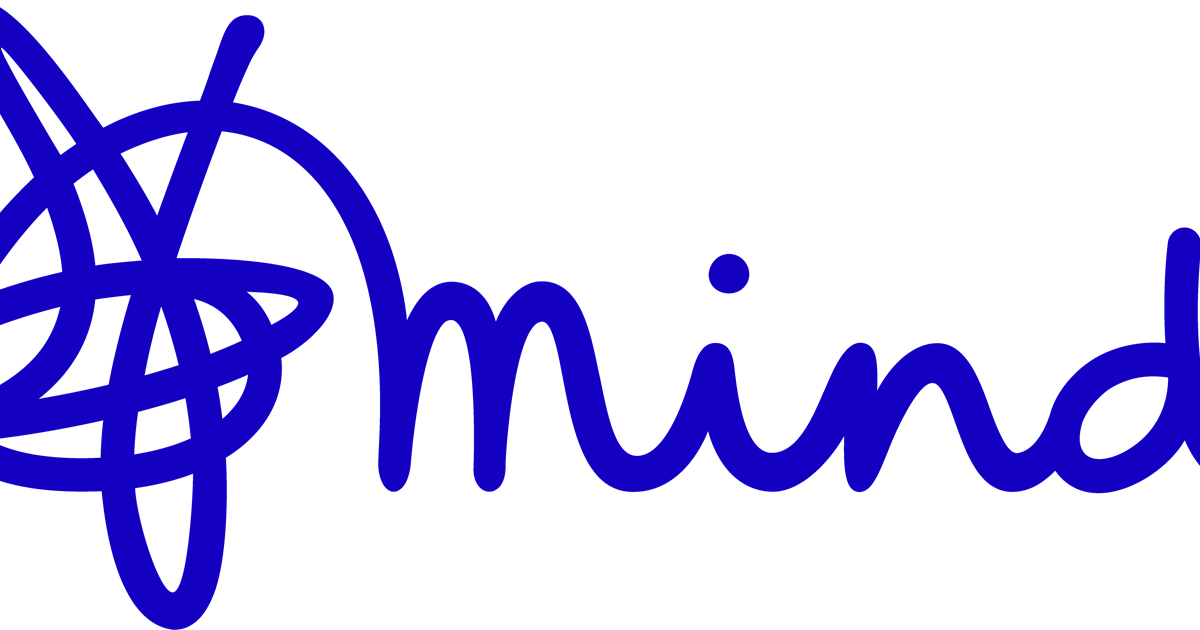

One of the most well-documented ways that creativity can improve mental health is through art therapy. Art therapy encourages individuals to use creative expression to process emotions, reduce stress, and gain insight into their psychological well-being.
Depression, anxiety, and other mental health conditions can be debilitating, and they often interfere with the creative process. Seeking treatment, whether through therapy, medication, or lifestyle changes, is not a betrayal of one’s artistic identity — it’s a necessary step toward well-being.From the cathartic release of painting or writing to the therapeutic benefits of art therapy, creativity has the potential to heal and uplift. However, it’s also important to acknowledge the challenges that come with being a creative individual, including perfectionism, burnout, and the risk of romanticizing mental illness. By embracing mindfulness, setting boundaries, and seeking support when needed, artists can nurture their creativity without sacrificing their mental well-being.Creativity and mental health are deeply intertwined. From poets and painters to musicians and filmmakers, artists throughout history have been recognized not only for their work but for their emotional depth, often grappling with intense feelings that translate into their craft. This intersection raises important questions: Why do artists feel so deeply? How do creative outlets influence emotional well-being?However, the relationship between creativity and mental health isn’t always positive. Many artists struggle with perfectionism, an issue that can take a significant toll on their mental well-being. The desire to create something perfect can lead to feelings of inadequacy, frustration, and self-doubt, especially when the artist’s vision doesn’t align with the final product.
Art therapy stands as a vibrant testament to the profound connection between creativity and mental wellness. By embracing artistic expression, individuals can embark on a journey of self-discovery, emotional release, and enhanced communication.
In the realm of mental health, a captivating avenue for exploration and healing lies in the expressive world of art therapy. This blog post delves into the therapeutic benefits of art, its impact on mental well-being, and practical ways individuals can harness their creativity to promote positive mental health.Art therapy bridges communication gaps, enabling individuals to convey their experiences and perspectives through visual expression. Practical Ways to Embrace Art for Mental Wellness: ... Allow yourself the freedom to create without specific goals or expectations. Expressive and abstract art can be a powerful way to tap into your emotions and creativity.Art therapy stands as a vibrant testament to the profound connection between creativity and mental wellness. By embracing artistic expression, individuals can embark on a journey of self-discovery, emotional release, and enhanced communication.Collage-making can be a therapeutic way to explore your feelings and aspirations in a visually symbolic way. ... Engage in collaborative art projects with friends, family, or support groups. The shared creative experience can strengthen connections and create a sense of community.

Whether you’re dealing with anxiety, ... feelings and find clarity. Our experienced art therapists guide you through creative exercises tailored to your needs, helping you unlock new perspectives and foster mental and emotional well-being....
Whether you’re dealing with anxiety, depression, trauma, or simply seeking personal growth, art therapy provides a safe and supportive space to express your feelings and find clarity. Our experienced art therapists guide you through creative exercises tailored to your needs, helping you unlock new perspectives and foster mental and emotional well-being.Art therapy offers a unique avenue to enhance your mental health and emotional well-being. Through the creative process, you can explore and process difficult emotions in a non-verbal way, making it easier to express and understand your feelings.This form of therapy can help alleviate symptoms of depression, anxiety, and other mental health issues, fostering a greater sense of peace, balance, and overall happiness. Art therapy provides a safe and nurturing environment where you can freely express yourself without judgment. It encourages the exploration of your creative potential, allowing you to communicate thoughts and feelings that may be hard to put into words.Art therapy is a unique and powerful form of therapy that harnesses the healing power of creativity and self-expression. By engaging in the artistic process, individuals can explore their emotions, reduce stress, and gain insights into their inner selves.
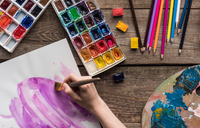
This article explores how art therapy allows us to explore and resolve inner conflicts through creative expression when traditional verbal methods fall short.
Art therapy is often assumed to be as simple as drawing one’s feelings, but it’s actually a powerful and often misunderstood tool that can help us move toward greater wellness. The quote above by Carl Jung captures the essence of this. This article explores how art therapy allows us to explore and resolve inner conflicts through creative expression when traditional verbal methods fall short. It is a dynamic process of change and growth involving actively making choices that help to create a fulfilling life, integrating healthy habits, and striving for both physical and mental well-being.Everyone has an inherent capacity for creativity, regardless of skill level. In art therapy, there is no “good” or “bad” art. The art therapist inquires with curiosity and asks questions like, “What would you like to share” or “Can you tell me about your image?” The client is encouraged to interpret their art, with meaning evolving over time. Art therapy offers a multifaceted approach to enhancing well-being and self-discovery.If you’re curious about exploring art therapy, consider reaching out to a certified art therapist to discover how this creative approach can support your journey towards greater wellness.Sarah, LCAT (Licensed Creative Art Therapist) and LPC (Licensed Professional Counselor), is Wellness Coordinator, Art Therapist, and Staff Clinician at Anxiety Institute.
Art therapy uses active art-making, the creative process, and applied psychological theory—within a psychotherapeutic relationship—to enrich the lives of individuals, families, and communities. Art therapists are mental health clinicians with Master’s degrees or higher that serve clients in different settings—from medical institutions and schools, to wellness ...
Art therapy uses active art-making, the creative process, and applied psychological theory—within a psychotherapeutic relationship—to enrich the lives of individuals, families, and communities. Art therapists are mental health clinicians with Master’s degrees or higher that serve clients in different settings—from medical institutions and schools, to wellness centers and independent practices."If I could offer advice to someone pursuing a career in art therapy, it would be to invest in your own mental health and wellness. Hurt people hurt others, and healed people are most equipped to accompany others on their own healing journeys.A Master’s degree is necessary to practice art therapy. Coursework includes training in the creative process, psychological development, group therapy, psycho-diagnostics, research methods, and multicultural diversity competence.The American Art Therapy Association represents a diversity of professionals, students, and educators. We recognize and celebrate the work of our members at all levels through our Featured Member series. “I understood the positive impact of my creative endeavors, long before I had ever heard of art therapy.

When the soul cries out for healing, art therapy emerges as a powerful catalyst, unlocking the transformative potential of creativity in the pursuit of mental well-being. This vibrant approach to healing has been gaining traction in recent years, offering a unique blend of self-expression and ...
When the soul cries out for healing, art therapy emerges as a powerful catalyst, unlocking the transformative potential of creativity in the pursuit of mental well-being. This vibrant approach to healing has been gaining traction in recent years, offering a unique blend of self-expression and therapeutic guidance.Since then, it has evolved into a respected field of study and practice, with trained professionals helping individuals navigate their mental health journeys through various creative mediums. When we think of art therapy, our minds might immediately conjure images of easels and paint-splattered canvases. While visual art therapy is indeed a significant component, it’s just one hue in a vibrant spectrum of creative healing approaches. Visual art therapy, the most well-known form, encompasses drawing, painting, sculpting, and collage-making.As our understanding of the mind-body connection deepens, the role of creative expression in mental health treatment is likely to grow even more significant. For those curious about exploring art therapy, remember: you don’t need to be an artist to benefit from this approach. All you need is an open mind and a willingness to explore. Whether you’re dealing with specific mental health challenges or simply looking to enhance your emotional well-being, art therapy offers a unique path to self-discovery and healing.So why not pick up a paintbrush, strike up a tune, or put pen to paper? Your journey of creative healing might be just beginning. After all, within each of us lies an artist waiting to emerge, ready to paint the path to mental well-being with strokes of vibrant self-expression. ... 1. American Art Therapy Association.

Now, a new study by Keyes and fellow ... in creative activities can significantly boost well-being by providing meaningful spaces for expression and achievement. ... Although prior studies have shown that creating arts and crafting is therapeutic for people with mental health conditions, ...
Now, a new study by Keyes and fellow researchershas found that engaging in creative activities can significantly boost well-being by providing meaningful spaces for expression and achievement. ... Although prior studies have shown that creating arts and crafting is therapeutic for people with mental health conditions, the general population has been understudied, according to the study, which published recently in Frontiers in Public Health.Benefits include: increase in self-esteem, reduction in anxiety/stress, improving communication, and fostering creativity,” said Dr. Frank Clark, a psychiatrist with Prisma Health and a poet, via email. Clark was not involved in the study. The researchers suggested that arts and crafts could improve public health. “Governments and national health services might consider funding and promoting crafting, or even socially prescribing these activities for at-risk populations as part of a promotion and prevention approach to wellbeing and mental health,” Keyes said.Research has shown that engaging in arts and crafts has greater mental health benefits than employment. A new study finds this applies to the general population, too.That’s why they sampled members of the general population without diagnosed illnesses to see how arts and crafts might contribute to well-being and may reduce loneliness outcomes in everyday life. The team used data from a major national survey in the UK between 2019-2020 to investigate how creative activities could impact life satisfaction, controlling for variables known to affect wellbeing such as gender, age group, health, employment status and deprivation.

The use of artistic methods to treat psychological disorders and enhance mental health is known as art therapy. Art therapy is a technique rooted in the idea that creative expression can foster healing and mental well-being.
Your insurance may also be more likely to cover the sessions if your therapist is a certified psychologist or psychiatrist who offers creative therapies. Ask about their specialty. Not all art therapists specialize in all mental health conditions. Many specialize in working with people who have experienced trauma or individuals with substance use disorders, for example. Know what to expect. During the first few sessions, your art therapist will likely ask you about your health background as well as your current concerns and goals.Art therapy is a treatment approach that integrates psychotherapeutic techniques with the creative process to improve well-being. Learn more about art therapy.Doctors noted that individuals living with mental illness often expressed themselves in drawings and other artworks, which led many to explore the use of art as a healing strategy. Since then, art has become an important part of the therapeutic field and is used in some assessment and treatment techniques. Art therapy is not the only type of creative art used in the treatment of mental illness.According to a 2016 study published in the Journal of the American Art Therapy Association, less than an hour of creative activity can reduce your stress and have a positive effect on your mental health, regardless of artistic experience or talent.
Stella Luna Counseling and Wellness in Cleveland offers Expressive Arts Therapy with licensed, masters degree Art Therapist, Purandev Kaur. Discover the power of creativity today!
As an art therapist, I harness these benefits of the creative process and more within an art therapy session for the benefit of my client. If this sounds fascinating, liberating, challenging, exciting, or if you’re just curious to see what your inner O’Keefe or Van Gogh has to say about your inner life and consciousness and the state you are in currently, why not engage with our resident Art Therapist, Purandev Kaur, and experience Expressive Arts Therapy at Stella Luna Counseling and Wellness.She emphasizes the creative process over the final art product and combines traditional CBT and DBT techniques into art therapy sessions. “I am a true believer in the healing power of creativity.” · Learn more about Purandev and her work with Stella Luna Counseling & Wellness.Somewhere along the way, it seems, many of us learned to believe that we weren’t creative and that if we couldn’t produce professional, studio-grade works of art, then we had no right to call ourselves creative, let alone artists. There are a few basic principles that I believe as an art therapist.There are likely hundreds of ways that you employ creativity every day without even realizing it—from the clothes you choose to wear, to the way you creatively select ingredients when you cook, to the way you creatively problem solve a solution to your toddler’s tantrum at bedtime. In art therapy, we are encouraged to take a broader look at how we define creativity, and we operate under the assumption that all people are naturally creative – simply through the way they live their lives.
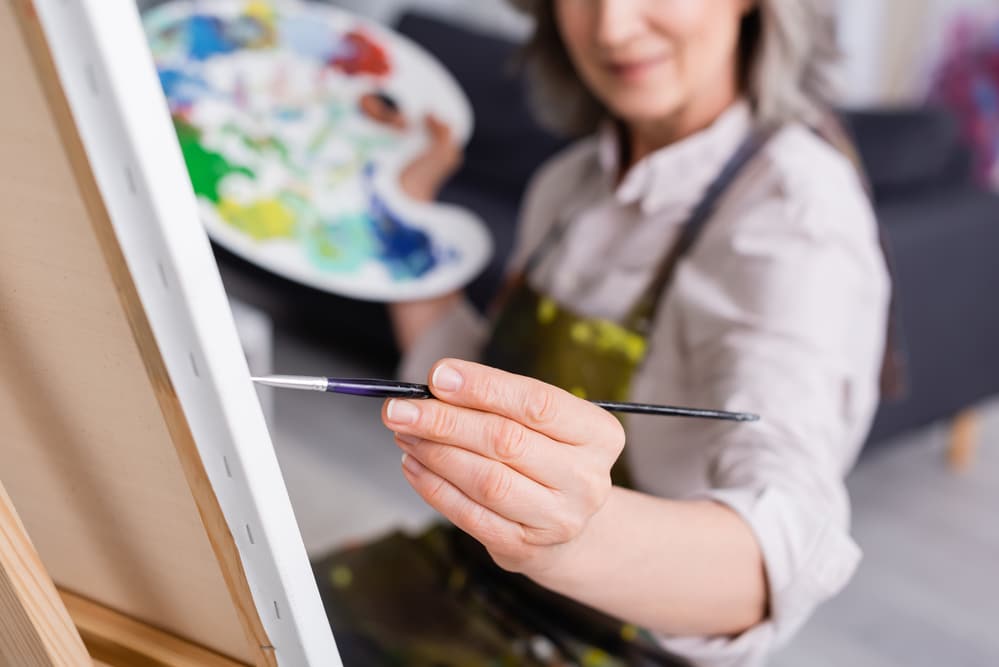
Once you unleash your creativity, your inner artist will quickly wake up. Studies also show that creating art stimulates the release of dopamine. This chemical is released when we do something pleasurable, and it basically makes us feel happier. Increased levels of this feel-good neurotransmitter ...
I agree with this that art therapy helps patients to recover from their mental health issues. I’m also a therapist and know well about all the things but in those cases in which the patient’s mental issues are at a higher level than in this art therapy doesn’t work so for this, we need other techniques to deal with the patient.Art therapy is a great way to express your emotions without words, process complex feelings and find relief from anxiety, depression, PTSD and other disorders.Stress relief: Fighting anxiety, depression or emotional trauma can be very stressful for you both mentally and physically. Creating art can be used to relieve stress and relax your mind and body. It is very important to know that you don’t have to be a talented artist in order to try art therapy. Human beings are innately creative, and all you need to do to complete an art therapy activity successfully is, to be honest with yourself and your emotions.Once you unleash your creativity, your inner artist will quickly wake up. Studies also show that creating art stimulates the release of dopamine. This chemical is released when we do something pleasurable, and it basically makes us feel happier. Increased levels of this feel-good neurotransmitter can be very helpful if you are battling anxiety or depression. Mental health professionals and experts agree that art therapy has many benefits, from boosting your self-esteem, and providing you a safe outlet to relieve your emotions, to giving you a sense of control over your life and helping you to get to know and understand yourself better.
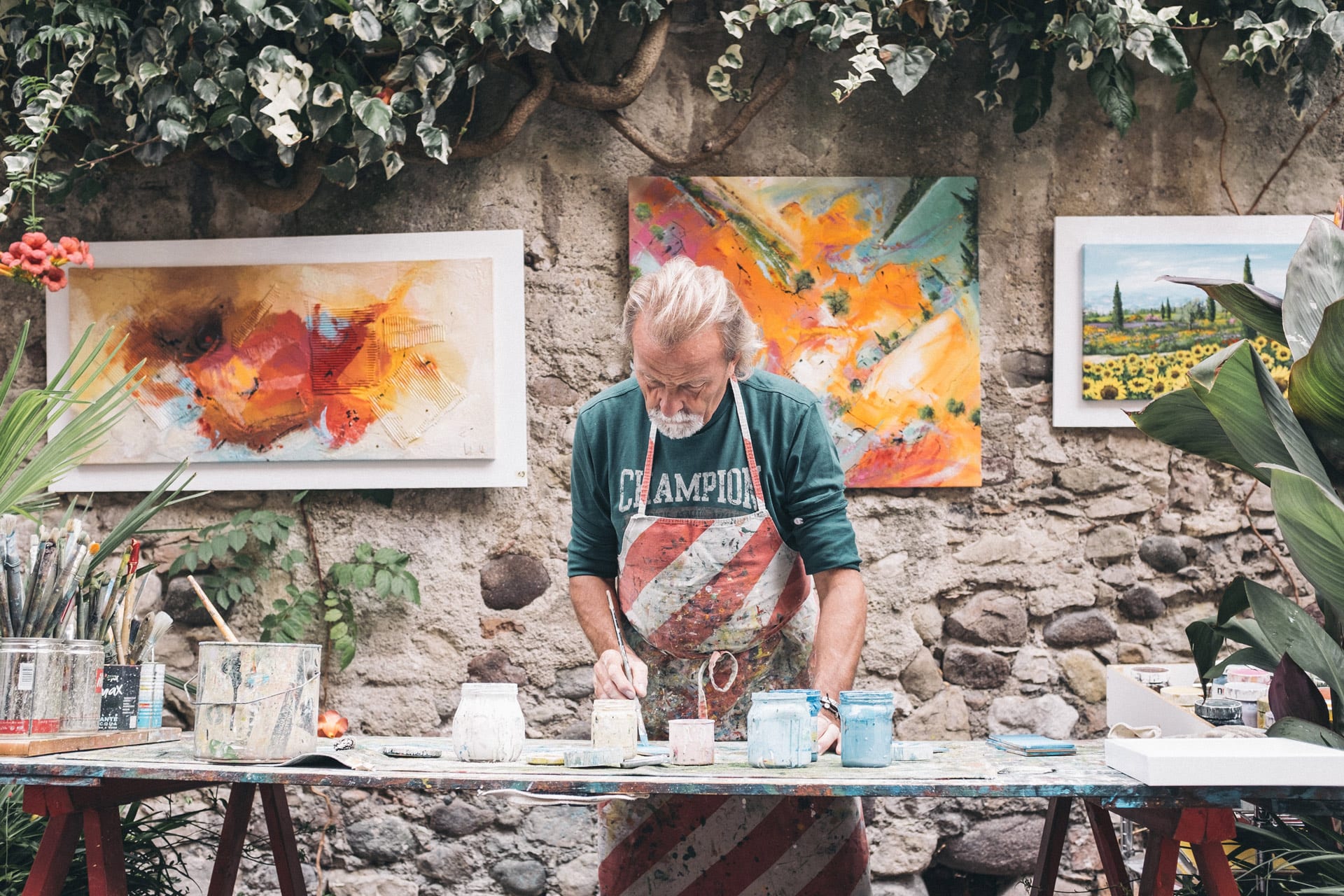
Art therapy is a form of psychotherapy that uses the creative process of making art to improve a person's physical, mental, and emotional well-being. It's based on the idea that expressing oneself artistically can help people heal and manage their feelings, reduce stress, and improve self-awareness ...
Art therapy is a form of psychotherapy that uses the creative process of making art to improve a person's physical, mental, and emotional well-being. It's based on the idea that expressing oneself artistically can help people heal and manage their feelings, reduce stress, and improve self-awareness and self-esteem.
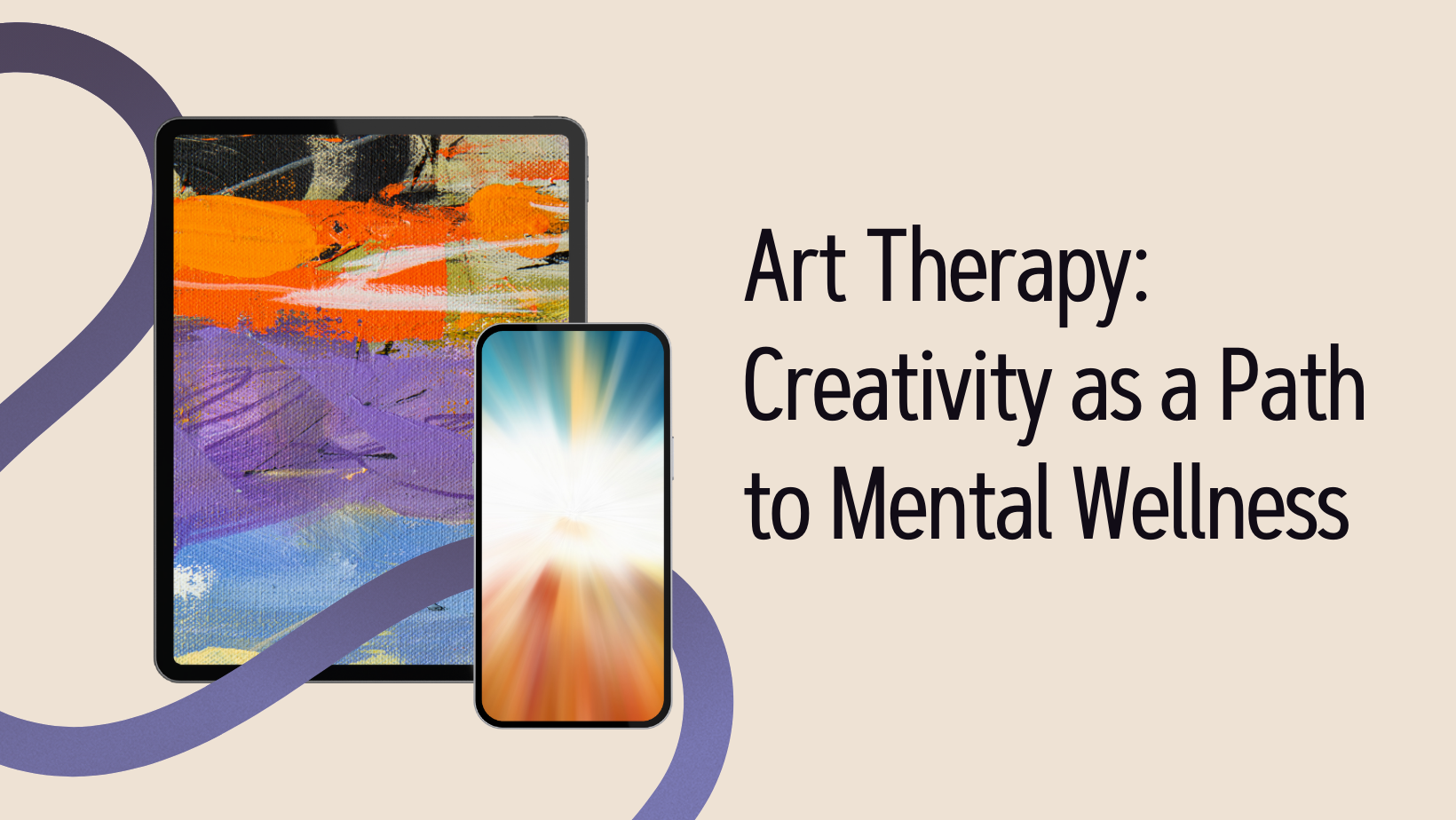
Creative therapy uses art forms — such as dance, drawing, or music — to help treat certain conditions. Trained therapists can administer creative therapy to help people experiencing a range of mental, emotional, and physical issues.
Creative therapy uses art forms — such as dance, drawing, or music — to help treat certain conditions. Trained therapists can administer creative therapy to help people experiencing a range of mental, emotional, and physical issues.Research from 2019 suggests that drama therapy may have a positive effect on the self-perception and self-expression of students with mental health or behavioral conditions. ... article from 2015 indicates that some people experience anxiety, an increase in pain, and unresolved emotions with creative therapy.Creative therapy is a form of therapy that involves a person receiving treatment through art-based activities. Creative therapy can have many benefits and seems to be useful for people with various physical, mental, and emotional conditions.Art therapy works by harnessing the powerful effect that creative expression has on human understanding and communication for therapeutic means. Learn…READ MORE ... Teletherapy is when people receive therapy for mental health issues digitally, usually by videoconferencing.
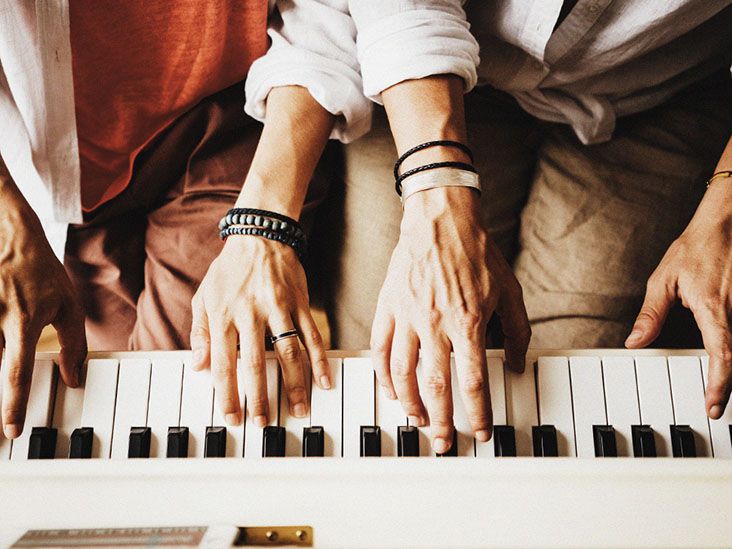
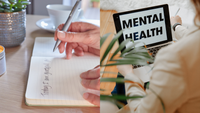
For anyone struggling with emotional wounds, embracing artistic expression may provide a path toward healing and renewal., Health News - Times Now
Artistic expression is more than just a creative outlet; it is a powerful instrument for emotional healing and personal growth. According to Sohini Rohra, a counselling psychologist, author, and mental health advocate, art provides a unique space to explore, express, and process complex emotions.Sohini says that through art, individuals are reminded of who they are beyond their pain. “They can rediscover their resilience and passions, facilitating long-term emotional healing and deepening self-awareness,” she states. In conclusion, the link between creativity and mental health is both powerful and profound.Creating art also offers a secure environment where individuals can confront their feelings without fear of judgement. As Sohini says, “When someone engages in a creative process, they create a private zone that is uniquely theirs.” This sanctuary allows them to fully experience intense emotions and fosters a deeper understanding of themselves.Another critical aspect of artistic expression is the sense of agency it fosters. Individuals who have experienced emotional trauma often feel helpless, as though their emotions control them. Sohini points out that creative work allows them to reclaim power over their emotional narrative.









